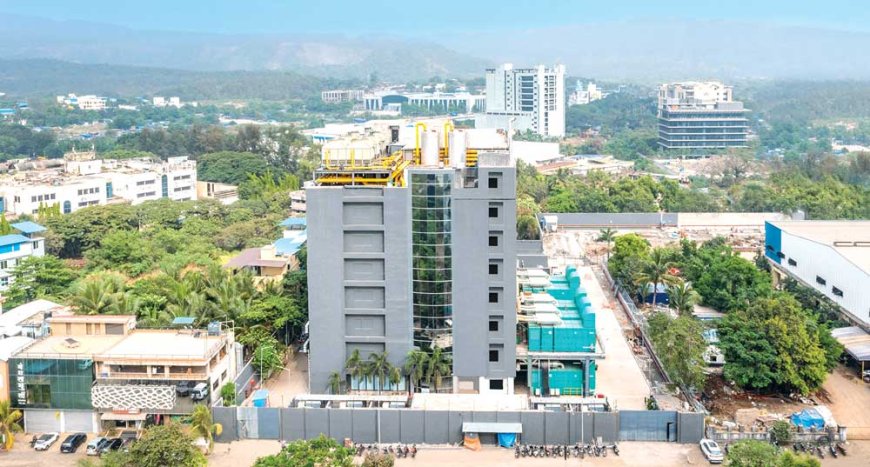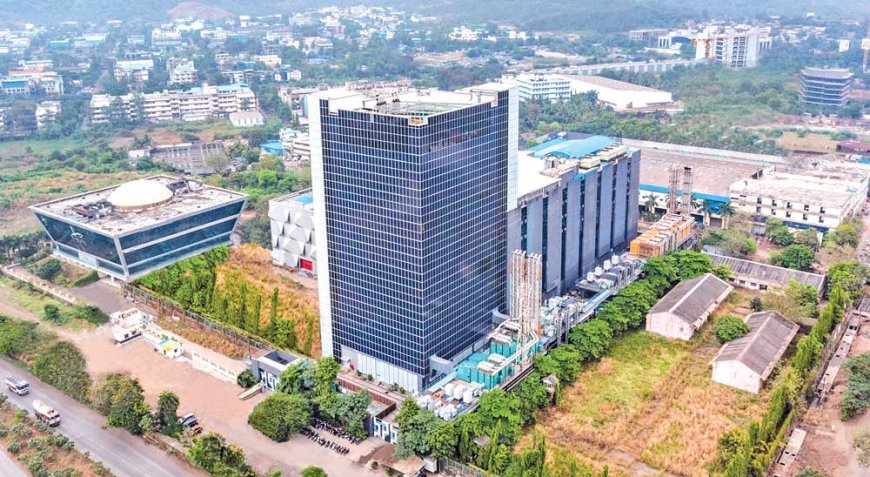We have outlined a strategic $2-billion investment plan for the next six years.

Vipin Jain
What is the current size of Indian data center market? What is driving the demand?
The Indian data center market has witnessed explosive growth in recent years, expanding from just 2.7 million square feet in 2017 to a staggering 11 million square feet in 2023, according to market research firm Arizton. This remarkable expansion is fuelled by India's growing digital economy, with over 880 million internet users generating copious amounts of data that require robust storage and processing infrastructure. The advent of transformative technologies like 5G, Internet of Things, and Machine Learning has further catalysed the demand for data centers, enabling a multitude of data-intensive applications across various sectors. Moreover, the growing emphasis on data localisation to reduce latency and enhance performance has spurred the need for local data centers within the country. The rise of data-centric industries such as e-commerce, over-the-top media platforms, and cloud services has significantly contributed to the surge in data center demand. With hyperscale cloud providers driving a substantial portion of this demand, the market is witnessing a proliferation of large, high-capacity data centers exceeding 20 MW.

What are the proactive policy measures that are pushing the growth of data center market in India?
The rise of cloud computing has driven substantial investments in hyperscale data centers, leading the Indian Government to implement critical policies to support industry growth. By granting infrastructure status and introducing the Data Centre Incentivization Scheme (DCIS), the government has facilitated easier access to credit and provided various incentives. Ensuring a reliable supply of electricity and robust connectivity backhaul has created a favourable operating environment. Additionally, specialised building codes, the establishment of Data Centre Economic Zones (DCEZs), and proposed measures such as integrating data centers into legislation and creating Data Centre Facilitation Units (DCFUs) have streamlined processes further.
What are the key challenges involved in setting up new data centers in the current scenario?
Establishing new data centers involves addressing multifaceted infrastructure challenges. Securing suitable land parcels that meet specific requirements, such as proximity to power grids, internet connectivity, and cooling sources, can be a significant hurdle. Navigating complex zoning regulations and obtaining necessary permits from local authorities can further complicate the land acquisition process. Energy efficiency and sustainability are also paramount concerns, necessitating innovative cooling solutions, renewable energy integration, and eco-friendly practices. Ensuring robust power infrastructure, including reliable supply and backup systems, is crucial for uninterrupted operations.
There are also physical security measures such as access control, surveillance, and fire suppression systems, that are imperative to safeguard sensitive data and equipment. Furthermore, adhering to industry standards, regulatory compliances, and data privacy regulations is a vital consideration in data center infrastructure design and implementation.

What are your expansion plans in Indian data center market?
CtrlS Datacenters has outlined a strategic $2 billion investment plan for the next six years, with three primary focus areas. The key priority for us will be the expansion of our hyperscale datacentres tailored for AI and cloud workloads, increasing the overall capacity by 350 MW. A crucial part of this will be setting up of a solar park near Mumbai to sustainably power our facilities, aligning with our goal of achieving Net Zero by 2030. Another focal point is to enhance our team’s capabilities by hiring over 1,000 new employees. These strategic interventions including scaling our hyperscale infrastructure, committing to sustainability, and investing in human resources will help position CtrlS to remain at the forefront of technological advancements and drive future growth.
What are the new technologies focusing on energy efficiency and sustainability?
We are making efforts to implement sustainability and improve energy efficiency across our operations. CtrlS is investing in 135-Megawatt Park (MWp) solar projects across three markets, that will generate 2,50,000-Megawatt Hours (MWh) energy annually. This includes a 125 MWp solar project in Maharashtra that will be fully owned and operated by the company. By 2030, CtrlS plans to invest in additional 1,000 MWp projects.
Recently, we have also transitioned our 8 MW Noida data center (DC1) to use 60% solar power for its annual energy needs. This decision reflects our commitment to sustainability and reducing our carbon footprint. By integrating solar power into DC1, we're aiming to significantly cut our environmental impact and move towards our goal of net zero emissions by 2030. This is part of our broader strategy to use renewable energy across all our data centres. In addition to solar power, we are also using advanced green technologies like water recycling, direct-to-chip cooling, and liquid cooling to boost energy efficiency and further reduce our environmental footprint.
What opportunities do you look forward in data centre market? What is the market outlook?
The data center market presents significant opportunities for growth and innovation. The increasing demand for digital services, cloud computing, and data-intensive applications is driving the need for robust, scalable, and efficient data center infrastructure solutions. Key opportunities in this space include the development and deployment of advanced cooling systems, uninterruptible power supplies, and intelligent power distribution systems to support high-density computing environments while optimising energy efficiency. Additionally, there is a growing demand for modular and scalable data center designs, enabling organisations to expand their infrastructure seamlessly as their needs evolve. The integration of software-defined networking (SDN) and data center infrastructure management (DCIM) solutions is also gaining traction, allowing for improved connectivity, automation, and real-time monitoring of data center resources.







